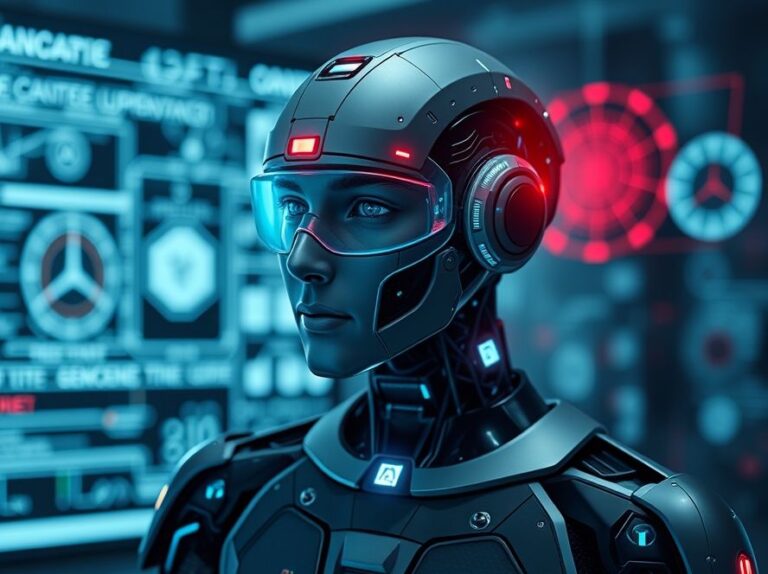Understanding Robotics
Robotics is the interdisciplinary branch of engineering and science that deals with the design, construction, operation, and use of robots. It integrates fields such as mechanical engineering, electrical engineering, computer science, and artificial intelligence (AI) to create automated machines that can perform tasks traditionally carried out by humans. In essence, robotics encompasses the entire lifecycle of robots, from conception to actual deployment in various industries.
The Importance of Robotics in Today’s World
In recent years, robotics has become a crucial component in technology and automation, influencing various sectors including manufacturing, healthcare, and service industries. Robotics not only enhances efficiency but also reduces human error, leading to increased productivity and safety. As programming and AI advance, the roles and capabilities of robots continue to expand, making them indispensable in numerous applications.
Key Components of Robotics
- Sensors: Devices that gather information from the robot’s environment, helping it to perceive surroundings.
- Actuators: Components that convert energy into motion, allowing robots to perform physical tasks.
- Control Systems: Software and hardware that direct the robot’s movements and actions based on input from sensors.
- Artificial Intelligence: Algorithms that enable robots to learn from data and improve their performance over time.
Common Applications of Robotics
Robotics is utilized in various fields, showcasing its versatility and practicality. Here are some notable examples:
- Manufacturing: Robots are widely used in assembly lines for tasks such as welding, painting, and packaging. Companies like Ford and BMW employ robots to enhance precision and productivity.
- Healthcare: Surgical robots assist surgeons in performing minimally invasive procedures with greater accuracy. For instance, the da Vinci Surgical System allows for precise movements during complex surgeries.
- Agriculture: Autonomous tractors and drones are transforming farming, enabling efficient planting, monitoring, and harvesting of crops. Companies like John Deere leverage robotics for innovative farming solutions.
- Logistics: Robots are increasingly used in warehouses for sorting, packing, and transporting goods. Amazon employs Kiva robots to streamline its order fulfillment processes.
How Robotics Works: A Deeper Dive
Understanding how robotics functions requires a closer look at the underlying technologies and methodologies:
1. Robot Design and Development
The design phase involves creating a blueprint for the robot, considering its purpose and the environment it will operate in. Engineers must choose materials and components that ensure durability and efficiency.
2. Programming Robots
Robots are programmed using various languages, such as Python, C++, and Java. Programming involves writing algorithms that dictate how a robot should behave under different circumstances. For example, a robot designed for warehouse logistics must be programmed to navigate complex environments safely and efficiently.
3. Machine Learning in Robotics
Machine learning is a subset of AI used in robotics to enable machines to learn from experience. By analyzing data from their environment, robots can improve their performance over time. For instance, a robot that sorts packages may learn to identify and categorize items more quickly through repeated exposure to different shapes and sizes.
4. Human-Robot Interaction
As robots become more integrated into daily life, understanding how they interact with humans is crucial. This involves designing user interfaces that allow seamless communication between humans and robots, ensuring that users can effectively control and collaborate with robotic systems.
Practical Applications of Robotics in Daily Life
Robotics is not just a concept reserved for factories or research labs. Here are practical ways you can experience or implement robotics in your day-to-day activities:
- Home Automation: Smart home devices such as robotic vacuum cleaners (like Roomba) and lawnmowers can simplify household chores, allowing users to spend more time on leisure activities.
- Education: Robotics kits and programmable robots are excellent tools for teaching programming and engineering concepts to students. Kits like LEGO Mindstorms encourage hands-on learning and creativity.
- Health Monitoring: Wearable robots and exoskeletons assist individuals with mobility impairments, providing support for rehabilitation and enhancing quality of life.
Related Concepts in Robotics
Robotics is closely linked to several other concepts in technology and science. Understanding these relationships can deepen your understanding of the field:
- Artificial Intelligence (AI): The driving force behind smart robots, AI enables machines to perform tasks that typically require human intelligence.
- Automation: The use of technology to perform tasks with minimal human intervention, of which robotics is a vital component.
- Machine Learning: A branch of AI that focuses on the development of algorithms that allow robots to learn from data and improve over time.
- Mechatronics: An interdisciplinary area combining mechanical engineering, electronics, computer science, and control engineering to design and create intelligent systems.
Conclusion: Embracing the Future of Robotics
As technology continues to evolve, the potential for robotics is limitless. From enhancing manufacturing processes to improving healthcare outcomes, robotics is set to redefine the way we live and work. By understanding the fundamentals of robotics and its applications, professionals in programming and web development can leverage these advancements to innovate and create solutions that meet the demands of tomorrow.
Reflect on how robotics can be integrated into your work or personal projects. Whether you’re developing software for robotic applications or exploring automation solutions, the knowledge of robotics can provide a competitive edge in the ever-evolving tech landscape.









